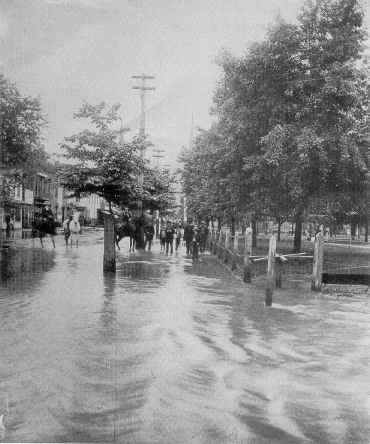 |
In 1889 Johnstown was a thriving and industrious
city having a population of about 30,000 which included the
surrounding boroughs. It was a city surrounded by mountains and was
reached by the great lines of the Pennsylvania and Baltimore and
Ohio Railroad. Every inch of available ground was studded with
dwelling houses, up to date business establishments, the immense
manufacturing establishment of the world famous Cambria Iron
Company, the Johnson Street Railway Company and the homes of
workmen.
On the morning of May 31st Johnstown was already
under two to seven feet of water as it had been raining steadily for
a week and historians reported that it was the heaviest rainfall of
the century. By 11:00 A.M. the rivers had overflowed their banks,
the Poplar Street bridge had been washed away and many persons were
busy carrying their household goods to the second floor. Rafts and
boats were taking women to higher ground. This happened regularly
because spring floods were common in Johnstown and the residents did
not seem worried about the dam. Every year since the dam was built
the city had been warned that the dam might break. The warning so
often proved unnecessary that little attention was paid to it on May
31, 1889. Most of the people of Johnstown and the Conemaugh Valley
felt that if the dam did break it would do no more damage than to
add two or three feet of water to the already flooded city. |